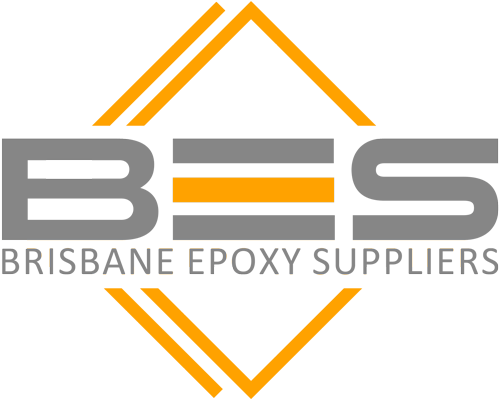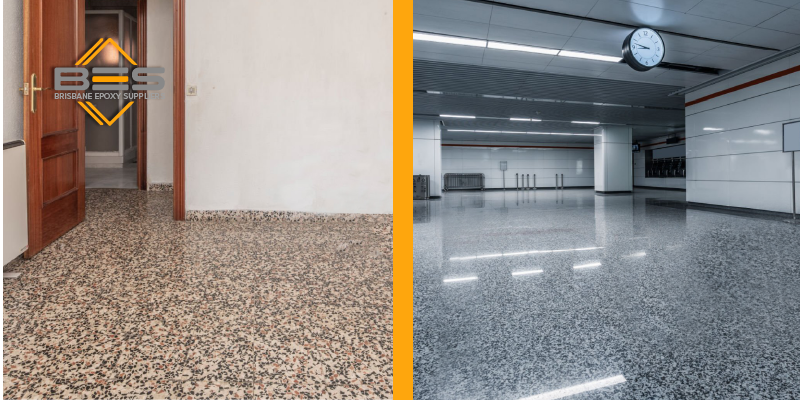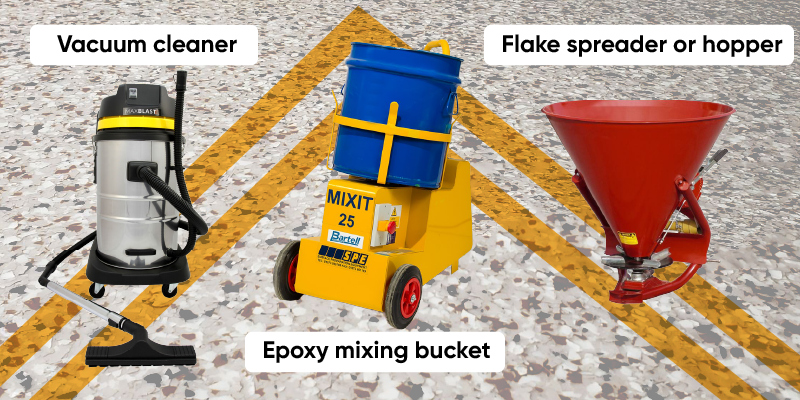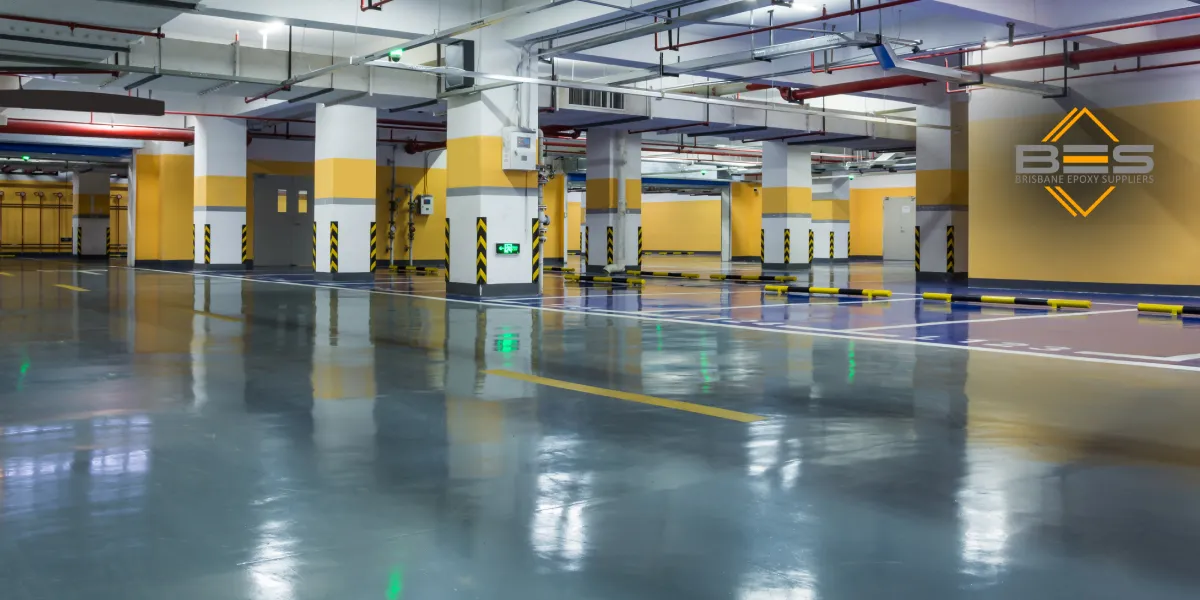How Much Flake for Epoxy Floor: A Comprehensive Guide
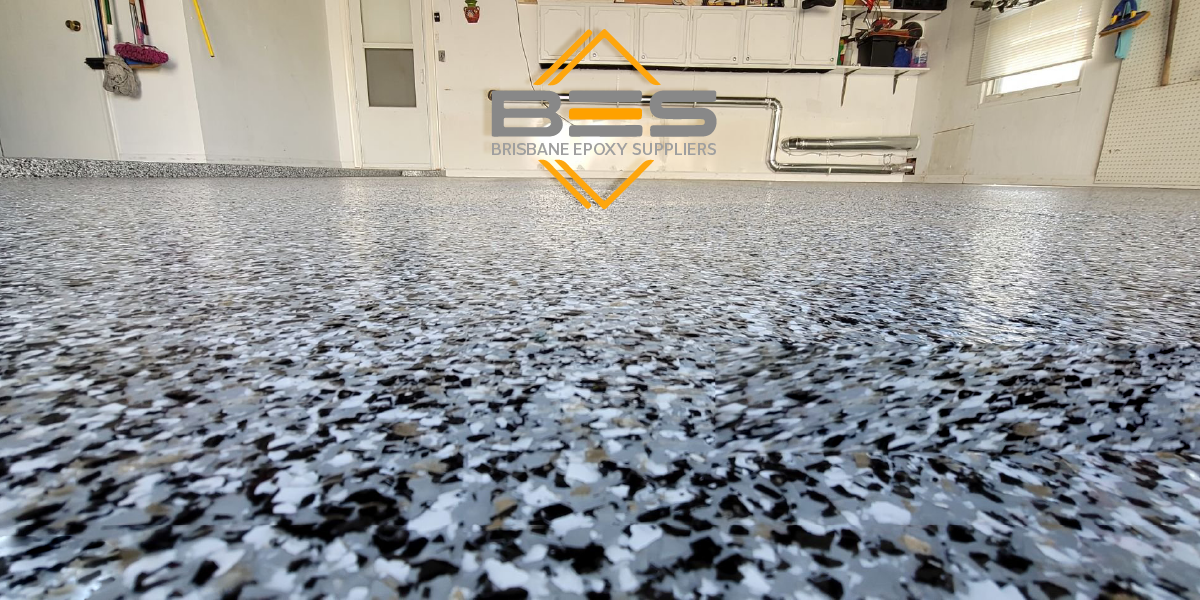
If you are searching for the best way to determine how much flake for epoxy floor is the best and appropriate amount, this guide will help you all the way through. It doesn’t matter if you are searching for the best kind of flooring for residential or commercial spaces; epoxy flake flooring is the best option due to its durability, ease of maintenance, and aesthetic appeal.
What Is Epoxy Flake Flooring?
We are all familiar with epoxy floors! Epoxy floors are a layer of epoxy resin that is applied over different kinds of floors, usually a concrete substrate. It provides a seamless, durable, and appealing surface that lasts a lifetime.
To create a visually appealing finish, you can add some decorative flakes, which are also known as color chips or vinyl chips. Decorative flakes are small pieces of pigment that are scattered over the wet epoxy and bring new life to your floor. These flakes come in various colors, shapes, and sizes, which offer a wide range of design possibilities for customers.
Important Factors Affecting the Amount of Flakes Needed
How much flake for an epoxy floor? To achieve a professional epoxy floor covering that will last for years to come, you just need to use premium-grade floor coating products with the correct preparation. Generally, different factors affect the amount of flake required for your epoxy flooring. These factors are as follows:
• Floor Size
The most important factor is the total area to be covered. Generally, a large floor will require more flakes. However, everything depends on you and your priorities.
• Flake Coverage Preference
Which one do you prefer? A light or full coverage? Flake coverage in epoxy floors can range from light to full coverage. In light coverage, you can see the epoxy base coat, however, in full coverage, the flakes cover the entire area.
• Flake Size
Flakes in epoxy floors come in various sizes from small to large. If you prefer a uniform look, it’s better to choose smaller flakes. Remember that small flakes require a different quantity compared to larger flakes.
• Epoxy Type
Since the viscosity and thickness of the epoxy layer can affect how well the flakes adhere to the surface, you should be careful about choosing the right kind of epoxy. If you choose a thicker epoxy resin for the floor, it may require more flakes for complete coverage.
• Surface Condition
If you clean, prime, and smooth the floor thoroughly, this will provide a more uniform surface for flakes. Finally, this may reduce the amount of flakes needed for the desired coverage.
Necessary Materials for Applying Flakes to Epoxy Flooring
Before starting to apply the epoxy resin to the floor, make sure that you provide high-quality epoxy flooring supplies. Here is the complete list of necessary materials and tools:
Epoxy Kit: Make sure to choose a high-quality epoxy resin and hardener.
- Decorative Flakes: Choose the best kind of flakes that suit your design preferences.
- Primer: Use primer to ensure better adhesion of the epoxy to the substrate.
- Rollers and Brushes: You will need rollers and brushes for applying the primer and epoxy resin.
- Epoxy Spiked Shoes: Use epoxy-spiked shoes to walk on wet epoxy floors without leaving marks.
- Squeegee: Squeegee is used for spreading the epoxy resin evenly across the floor.
- Broom and Dustpan: You should thoroughly clean the floor before applying the epoxy resin. Use a broom and a dustpan for cleaning the floor.
- Protective Gear: You need to wear protective gear like gloves, goggles, and a mask to protect yourself from fumes and spills while applying the epoxy.
Step-by-Step Guide to Applying Flakes to Epoxy Floors
You can apply epoxy flake flooring both indoors and outdoors. Just follow these steps carefully to achieve a professional-looking epoxy floor with decorative flakes. This way, you can enjoy a durable and long-lasting epoxy floor with beautiful and amazing flakes.
Step 1: Prepare the Floor
First of all, you have to remove any dirt, dust, grease, or debris from the floor and clean it thoroughly. If you see any cracks or imperfections in concrete, fill it with patching compound and allow it to cure. At this stage, you can apply a concrete primer to the floor with a roller.
Step 2: Mix and Apply the Epoxy
You need to mix epoxy resin and hardener according to the manufacturer’s instructions. After that, apply the base coat of epoxy across the floor evenly with a roller or squeegee.
Step 3: Broadcast the Flakes
You need to broadcast the flakes by hand or with a spreader tool while the epoxy is still wet. Everything depends on you and your design preferences. If you prefer a uniform coverage, sprinkle the flakes evenly. You can also apply more flakes for a heavier look.
Step 4: Allow the Epoxy to Cure
Usually, you’ll need 12-24 hours to let the epoxy cure. Just read the manufacturer’s instructions. If you don’t let the epoxy resin cure for the recommended time, the next layer may not adhere properly.
Step 5: Apply Final Coat
At this stage, you need to mix the epoxy resin and hardener as per the instructions and apply it to the dried floor. Roll on the clear topcoat over the flakes to seal them in and provide a durable, glossy finish.
How Much Flake for Epoxy Floor?
To determine the amount of flakes needed for your project:
- Calculate Floor Area: Measure the length and width of the floor to find the total square footage (length x width).
- Decide on Coverage Level: Choose between light (1 lb. per 250 sq. ft.), medium (1 lb. per 100 sq. ft.), and heavy (1 lb. per 50 sq. ft.) coverage for covering the floor.
- Use Coverage Guidelines: Use the chosen coverage level to calculate the total pounds of flakes required.
Here is an example to comprehend the formula.
Imagine we have a floor area of 500 sq. ft. with medium coverage (1 lb. per 100 sq. ft..):
So, how much flake for an epoxy floor? Total Flakes Needed will be like this: 500 sq. ft. / 100 sq. ft. per lb. = 5 lbs. of flakes.
Common Challenges in the Installation of Epoxy Flake Flooring
Applying flakes to epoxy flooring comes with its challenges and difficulties, and you may encounter some problems along the way. Here is the list of common challenges and how to tackle them.
Inconsistent Flake Distribution: You just need to practice the broadcasting technique beforehand and maintain a steady hand while spreading the flakes. This will help you with an even flake distribution.
Epoxy Setting Too Quickly: Some kinds of epoxies cure too fast. To make sure that the flakes are applied correctly to the wet surface, work in smaller sections.
Flakes Sticking to Hands: Do not forget to wear gloves when spreading the flakes. Flakes may stick to your hand during application and cause problems.
Best Way to Calculate the Flakes for Epoxy Floor
Adding flakes to an epoxy floor is a fantastic way to bring new life and look to your floor. However, for a professional-looking and smooth look, you need to calculate the amounts of flakes properly. So, how much flake for an epoxy floor? The simple answer is: everything depends on you and your design preferences, and a professional can help you much better. Which one do you prefer? A light, medium, or heavy coverage? Just choose the best formula according to your preferences and apply the right amount of flakes.
Do not forget about choosing the right materials and techniques, as they will affect the final look of your project. Also, remember to consider factors such as floor size, desired coverage, and flake size, and everything else will be alright.
Conclusion:
Determining how much flake for epoxy floor you need is key to achieving a flawless finish. Consider factors like floor size, flake size, and the level of coverage you prefer—light, medium, or heavy. By carefully calculating these elements and using the right materials, you can ensure a durable and stunning epoxy floor that stands the test of time. Ready to transform your space? Start planning your epoxy floor today and enjoy a beautiful, long-lasting result!
